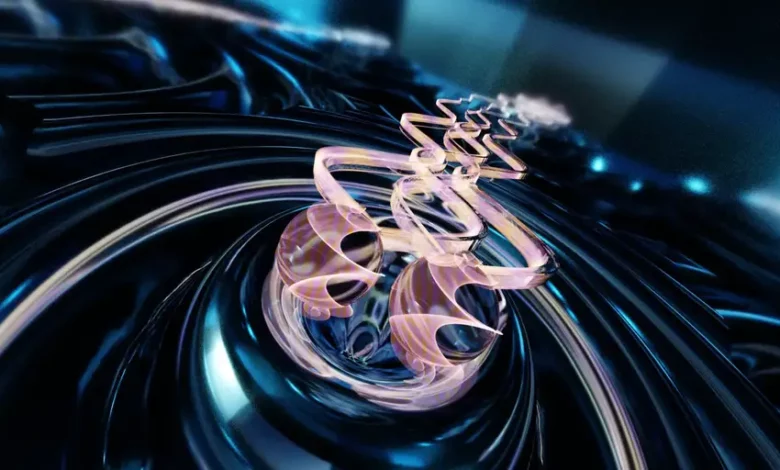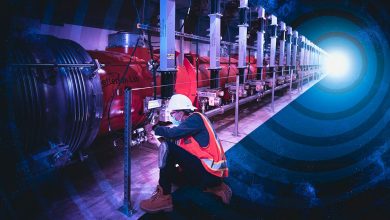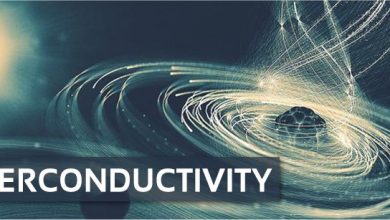
Lead Image: Researchers discovered unusual waves of charge within uranium ditelluride crystals. These waves are associated with a new aspect of the crystal’s superconductivity. The team’s observations and resulting model, supported by subsequent research at Cornell University, highlight the complex and surprising behavior of quantum particles and contribute significantly to the understanding of superconductivity. Credit: Emily Edwards
Scientists have made a significant contribution to understanding superconductivity by observing unusual charge waves within uranium ditelluride crystals.
‘A place for everything and everything in its place’–making sense of order, or disorder, helps us understand nature. Animals tend to fit nicely into categories: Mammals, birds, reptiles, whatever an axolotl is, and more. Sorting also applies to materials: Insulator, semiconductor, conductor, and even superconductor. Where exactly a material lands in the hierarchy depends on a seemingly invisible interplay of electrons, atoms, and their surroundings.
The Influence of Environment on Material Properties
However, unlike animal classification, the boundaries between material categories are less distinct. Modifying a material’s environment can prompt it to shift between categories. For instance, reducing the temperature can convert certain materials into superconductors, while introducing a magnetic field could reverse this effect. Even within a single category, different types of order, or phases, can emerge. Although these changes on the nanoscopic scale are invisible to the naked eye, scientists utilize advanced imaging tools to visualize what’s happening. Occasionally, they encounter unexpected and surprising behaviors.
“The discovery of new phases of matter is one of the holy grails in physics and often generates a lot of excitement because it can change our way of thinking and seeing, and even transform how we understand the behavior of quantum particles,” said physics professor Vidya Madhavan.
Unusual Waves Within Uranium Ditelluride Crystals
Led by Madhavan, researchers from the University of Illinois, the University of Maryland, WashU, and the National Institute of Standards and Technology, have now seen unusual waves of charge within a crystal of uranium ditelluride (UTe2). Theorists on the team developed a model that links the experimental observations to a previously unseen facet of the crystal’s unusual superconductivity. The findings, initially shared at a conference last year, inspired other researchers at Cornell University to measure complementary features of the superconductivity directly. Both results were published in the June 28 issue of Nature.
Superconductors were only discovered in the 1900s and scientists are still working to explain the myriad of materials that fall into this category. This work is the latest in a string of results regarding the superconductor UTe2. Researchers from the groups of Nicholas Butch at NIST and Johnpierre Paglione at University of Maryland supplied the crystals for this study. At ambient temperatures, UTe2 is rather unremarkable and resembles a bit of shiny, molten rock. As the material is chilled with liquid helium, it begins to conduct electricity without heating up – this is called superconductivity.
Superconductivity and Cooper Pairs
Regular conductivity, the movement of electrons that powers appliances, is mainly a single-particle effect. This means that scientists can explain and predict typical conductivity largely without accounting for the physics of electron-electron interactions. Superconductivity is quite different because it involves electrons interacting to form what are called Cooper pairs.
This interaction differs across materials, resulting in different “flavors” of superconductivity.
Evidence of Triplet Pairing in UTe2
For example, each electron has a property called spin, which can be oriented in one of two ways: up or down. When two electrons bind together, they can have their spins oriented in opposite directions or in the same direction. This latter one is called triplet pairing and is a rare bird in the world of superconductivity. Over the last few years scientists in this collaboration, as well as in other groups, have made measurements indicating that UTe2 has triplet pairing.
In this study, experimentalists from Madhavan’s group used a scanning tunneling microscope (STM) to visualize the microscopic structure of the material. There are no lenses or mirrors in this microscope. Rather electrons provide a sensitive window into the structure of UTe2. In the microscope, a tungsten tip sweeps across the surface of the material with sub-nanometer resolution. Both the tip and the material are part of an electrical circuit, with electrons scooting through vacuum from tip to material. Quantum tunneling causes this movement and is where the device gets its name. The setup operates at 300 millikelvin and magnetic fields up to around 11 Tesla. The STM revealed that the distribution of electrical charge was not uniform—instead there were stripes.
“We discovered the existence of a charge density wave in the superconducting state, but this by itself is not necessarily unusual. What is strange is that destroying the superconductivity also makes the charge wave goes away,” said Anuva Aishwarya, lead author and a physics graduate student in Madhavan’s group who has been relentlessly chasing down the physics of UTe2 and other exotic materials.
Fourier Analysis and Implications
Fourier analysis of the data demonstrated that charge density waves were present at low magnetic fields, disappearing above 10 Tesla where the superconductivity dissipated. This was a key indicator that the waves were somehow interconnected with the material’s superconductivity.
Theorists Julian May-Mann and physics professor Eduardo Fradkin from UIUC provided an explanation for these observations. According to the team, the charge density waves are spawned by an entirely different wave in the material, one that is made up of Cooper pairs. Neither of these waves ebb and flow like water. Instead, they are static variations in two different properties—one relates to the charge and the other to the interacting electron pairs. Together the waves provide insights into the types of order that occur in UTe2. Interwoven parent-daughter waves can also appear in other superconductors that contain copper and oxygen atoms. This new study is the first time that scientists have seen evidence for this in a superconductor with triplet pairing.
“This is very exciting to me. If this charge density wave is originating with a triplet pair density wave then there may be a fundamentally new phase that has come up in this material because of very strong electron interactions,” said Aishwarya.
References:
“Magnetic-field-sensitive charge density waves in the superconductor UTe2” by Anuva Aishwarya, Julian May-Mann, Arjun Raghavan, Laimei Nie, Marisa Romanelli, Sheng Ran, Shanta R. Saha, Johnpierre Paglione, Nicholas P. Butch, Eduardo Fradkin and Vidya Madhavan, 28 June 2023, Nature.
DOI: 10.1038/s41586-023-06005-8
“Widespread pair density waves spark superconductor search: Periodic waves of changing electron density are linked to the ability of some materials to conduct electricity without resistance. Four studies reveal that such waves could emerge in more materials than expected” by Hui Chen and Hong-Jun Gao, 28 June 2023, Nature.
DOI: 10.1038/d41586-023-01996-w


